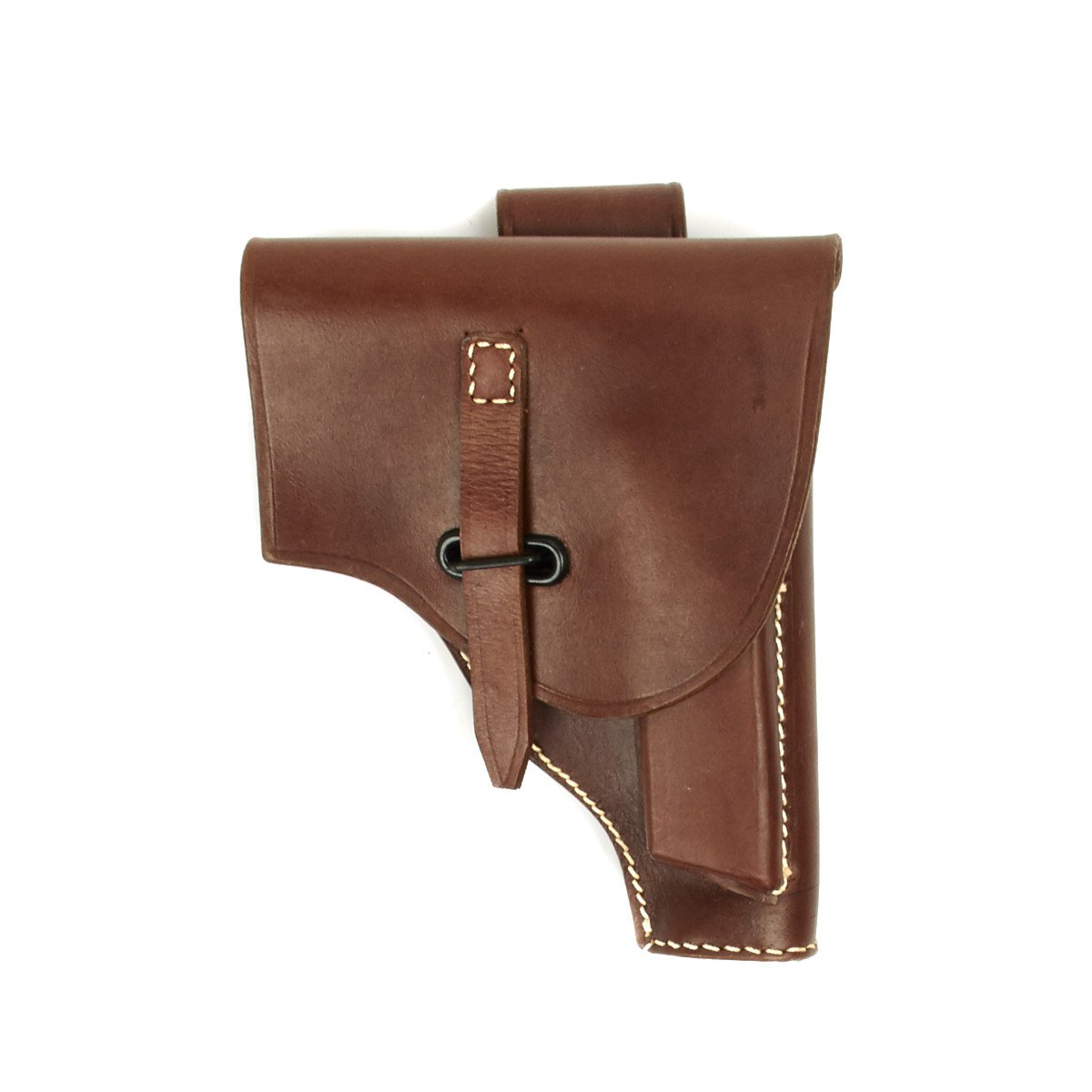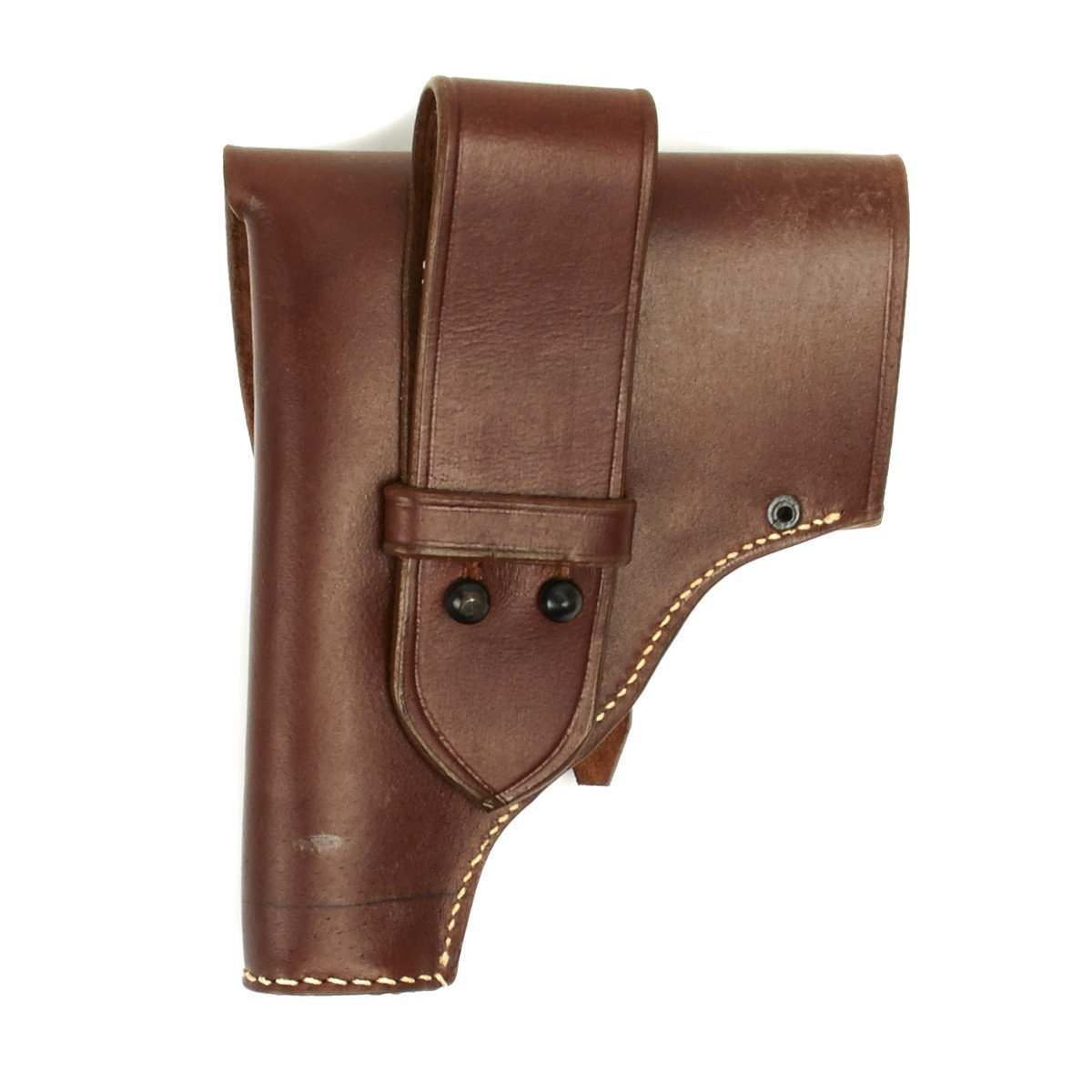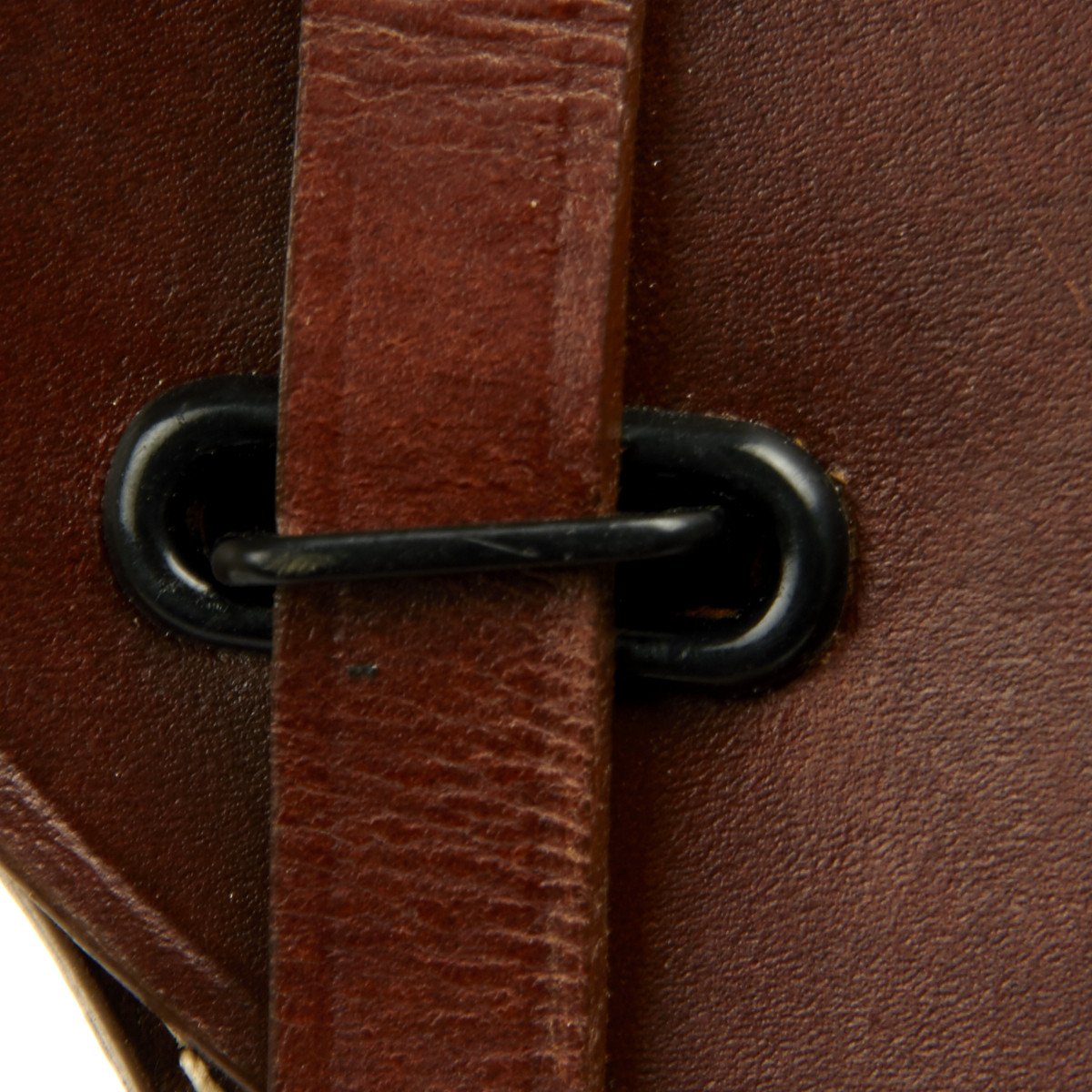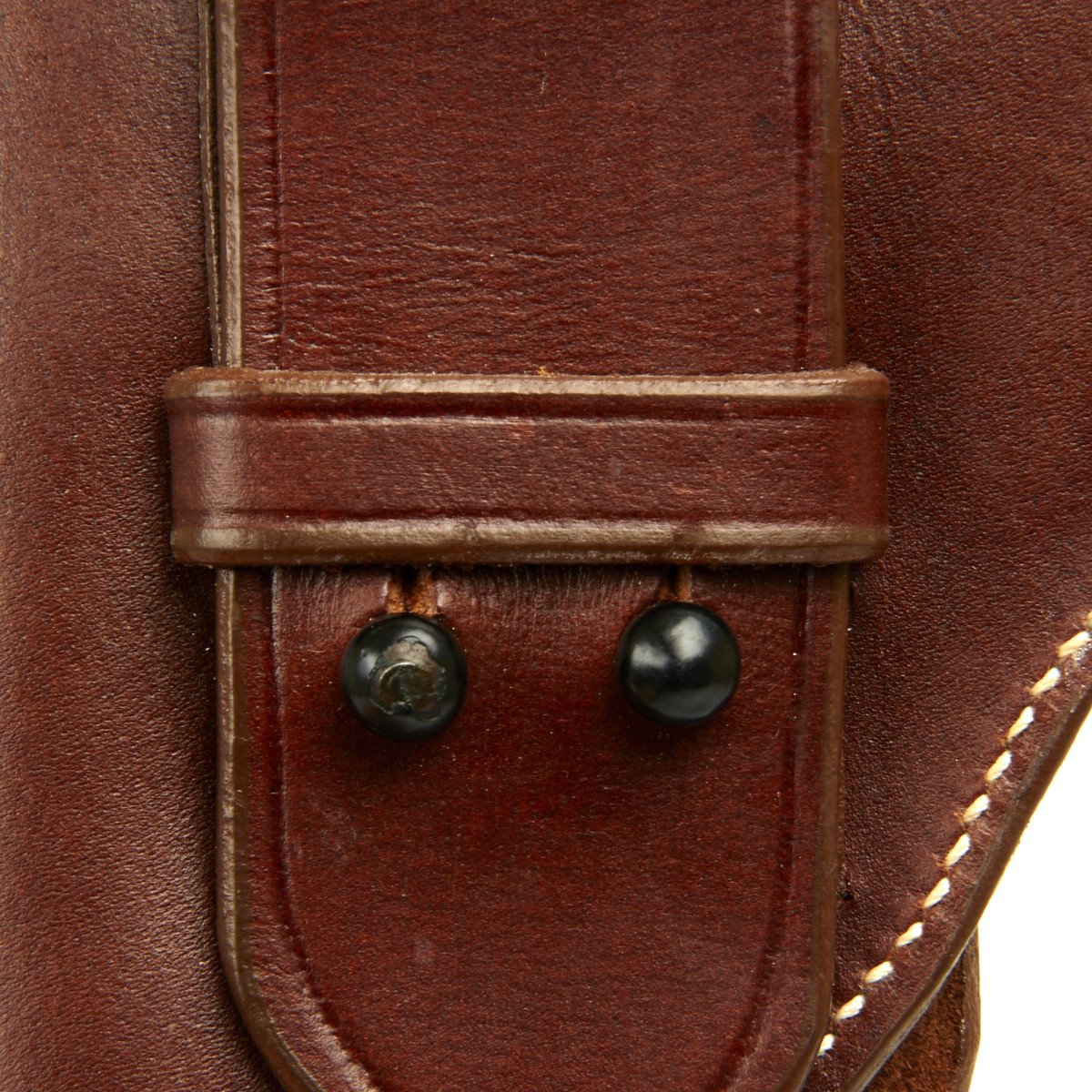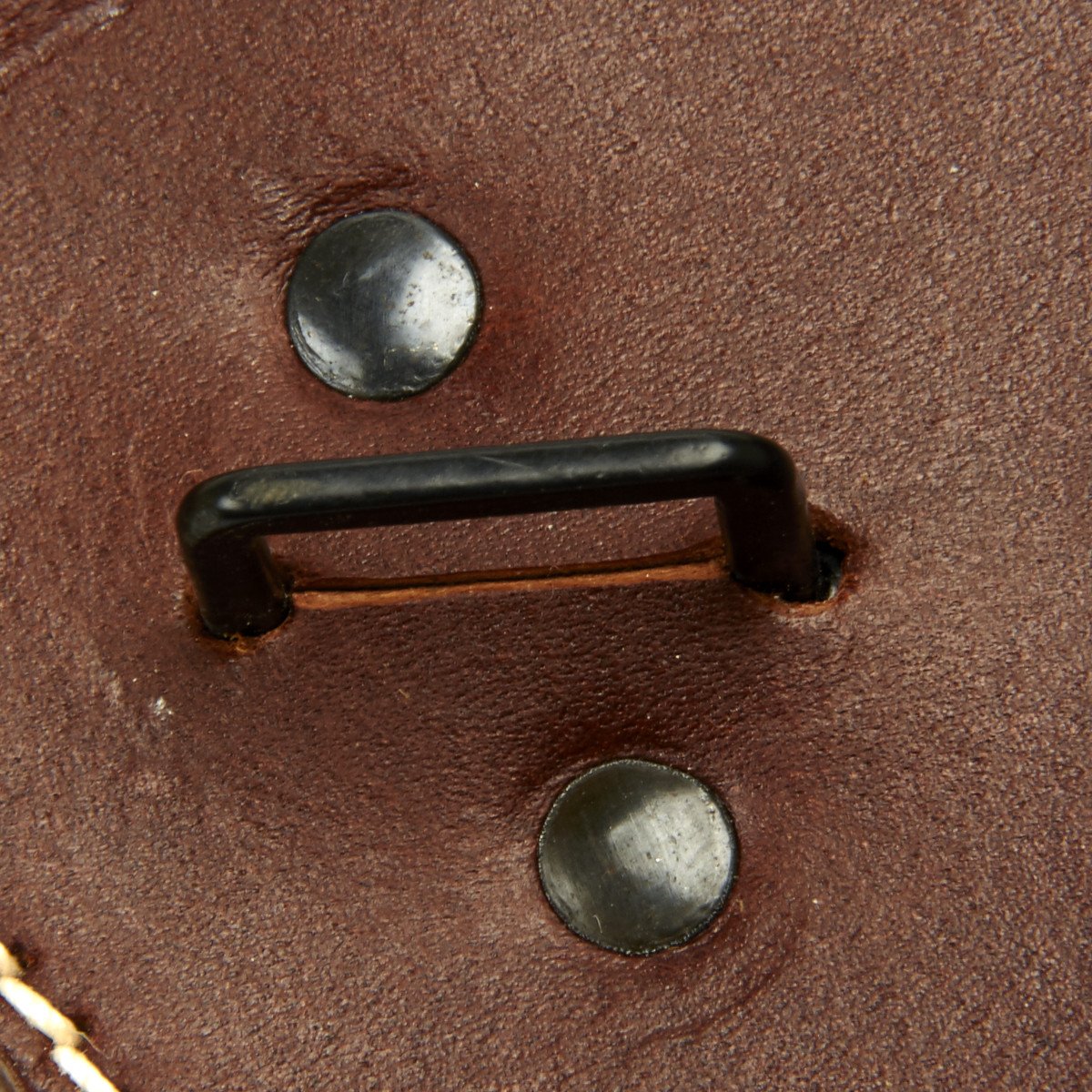Italian WWII Beretta M1934 Pistol Leather Holster – Model 1934 New Made Items
$ 24,95 $ 14,97
New Made Item: This is a high quality genuine leather holster for the Beretta M1934 .38 cal Italian WWII Beretta pistol. Holster features supple russet brown leather, heavy stitching and correct dimensions.
History of the Beretta M1934 Semi-Auto Pistol:
The Beretta Model 1934 is a compact, semi-automatic pistol which was issued as a standard service firearm to the Italian armed forces beginning in 1934. It is chambered for the 9 mm Corto, more commonly known as the .380 ACP.
Armi Beretta SpA of Gardone Val Trompia has a history in firearms manufacturing reaching back to 1526, when they were established as a maker of barrels. But it was not until 1915 that, responding to the needs of the military during World War I, they produced their first pistol, the model 1915. Beretta has become one of the world’s largest pistol makers and the model 1934 (M1934) was their most numerous product in the World War II era.
It was designed and purpose-built for the Italian armed forces. In the early 1930s, the Italian army was impressed by the Walther PP pistol. Beretta did not want to lose a big military contract to their German competitor and designed the M1934 for the Italian Army which accepted it in 1937. This model was followed by the M1935, which was similar to the M1934 in most respects, except that it fired a .32 ACP (7.65 mm Browning) cartridge.
Pistols made during the Fascist Era are marked with their year of manufacture in two forms: the conventional Julian date in Arabic numerals and the date in the Fascist Era in Roman numerals. The Fascist calendar commenced on 28 October 1922, so a pistol from 1937 may carry either “XV” or “XVI” as its Fascist year. Pistols taken by the armed forces usually exhibit acceptance marks stamped into the frame on the left just above the grip: “RE” (Regio Esercito) for the army, “RM” (Regia Marina) for the navy, or “RA” (Regia Aeronautica) for the Air Force, always in the form of an Eagle wearing a Royal Crown for the Royal air force. Police pistols may be marked “PS” (Pubblica Sicurezza). The Romanian military, at the time an Axis power, also purchased model 1934 (and 1935) pistols. The calibre marking appears as 9 mm Scurt (short in Romanian) rather than 9 mm Corto.[1] Romanian Army M1934’s differ from Italian M1934’s in that the Romanian pistols use the Russian sight picture, where the Italian pistols use the standard sight picture used by Western armies.
An M1934, serial number 606824, was used by Nathuram Godse in the 1948 assassination of Mahatma Gandhi. The pistol, manufactured in 1934, was carried by an officer during Italy’s invasion of Abyssinia and subsequently taken by a British officer as a war trophy. It is not known how it came to India, but Godse was given the unlicensed firearm by a co-conspirator.
Fitted with the characteristic Beretta open slide, the M1934 has a very reliable feeding and extraction cycle; the elongated slot in the top of the slide acts as the ejection port. It is made with relatively few parts and very simple to maintain. The M1934 is very robust in construction with a long service life if properly maintained.[citation needed]
9mm Corto (.380 ACP) is less powerful than most other military service pistol cartridges, such as 9mm Parabellum or .45 ACP. The magazine capacity is only 7 rounds. When the empty magazine is removed it no longer holds the slide back. The slide will come forward and close the gun unless it is held open by application of the safety, a separate operation, and this slows down the reloading of the pistol.
Prompt Shipping and Professional Packaging
We provide a variety of shipping options due to our long-running partnerships with UPS, FedEx and DHL. Our warehouse personnel are well trained and will pack the goods according to our exact and precise specifications. Before shipping your items will be thoroughly inspected and secured. Every day, we deliver to thousands of customers in different countries. This is a sign of our determination to become the largest online retailer worldwide. Both Europe as well as the USA have warehouses and distribution centers.
Note that orders containing more than one item will be subject to a processing period that is based to the particular item.
Prior to shipping the items, our staff will carry out an exhaustive inspection of the products you ordered. Today, most orders will be delivered within 48 hours. The estimated delivery time is between 3-7 days.
Returns
The stock is constantly changing. It's not entirely managed by us since we are involved with multiple entities, including the factory and our storage. Therefore, the actual inventory could alter at any time. It is possible that you will not receive your order after the order has been made.
The period of time is 30 days. Unfortunately, if 30 days have passed since you purchased your product, we are unable to provide a refund or exchange.
The item must not be in use and must be in the original packaging. The item must be in the original packaging.
Related products
Uncategorized
Uncategorized
Uncategorized
Uncategorized
Uncategorized
Uncategorized
Armoured Fighting Vehicles of the World: AFVs of World War One (Hardcover Book) New Made Items
Uncategorized
Uncategorized
Uncategorized
Uncategorized
Uncategorized
Uncategorized
Uncategorized
Uncategorized
Uncategorized
Uncategorized
